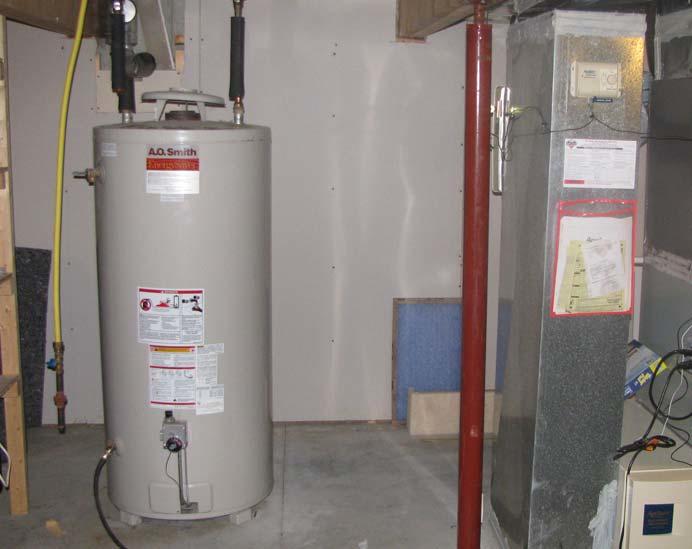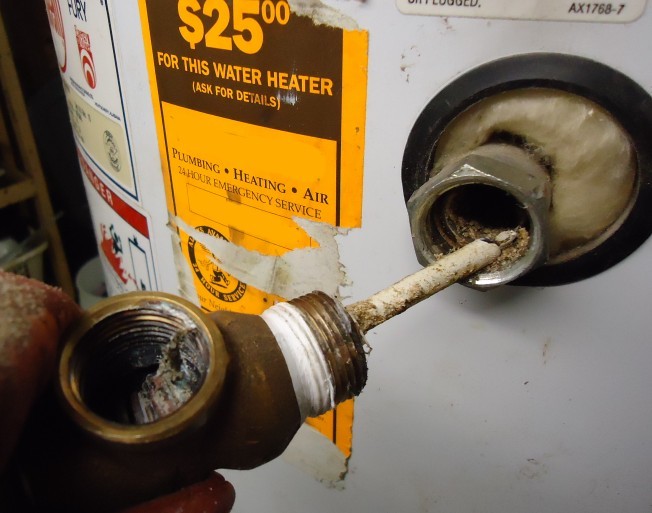Effective Strategies for Maintaining Your Home's Hot Water SystemKey Guidance on Caring for Your Home's Hot Water System
Effective Strategies for Maintaining Your Home's Hot Water SystemKey Guidance on Caring for Your Home's Hot Water System
Blog Article
We've found the article involving Tips on Maintaining a Water Heater down the page on the net and reckoned it made sense to write about it with you here.

Hot water is essential for daily comfort, whether it's for a revitalizing shower or cleaning meals. To ensure your hot water system runs efficiently and lasts much longer, routine maintenance is key. This write-up gives functional tips and understandings on exactly how to maintain your home's warm water system to prevent disruptions and pricey repair services.
Introduction
Maintaining your home's warm water system might appear complicated, however with a few easy steps, you can guarantee it operates efficiently for several years to find. This guide covers every little thing from understanding your warm water system to DIY upkeep ideas and knowing when to call expert aid.
Value of Maintaining Your Warm Water System
Routine upkeep not only extends the life expectancy of your hot water system yet likewise guarantees it operates successfully. Ignoring maintenance can cause decreased performance, greater energy costs, and even early failure of the system.
Indicators Your Hot Water System Demands Maintenance
Recognizing when your hot water system requires attention can protect against major concerns. Look out for indicators such as inconsistent water temperature level, strange noises from the heating unit, or rusty water.
Comprehending Your Warm Water System
Before diving right into maintenance tasks, it's handy to understand the standard components of your warm water system. Commonly, this includes the hot water heater itself, pipes, anode rods, and temperature level controls.
Monthly Maintenance Tasks
Normal monthly checks can assist capture minor problems prior to they escalate.
Flushing the Hot Water Heater
Purging your water heater eliminates debris buildup, improving effectiveness and lengthening its life.
Checking and Replacing Anode Rods
Anode poles prevent rust inside the storage tank. Evaluating and replacing them when worn is vital.
Inspecting and Readjusting Temperature Settings
Changing the temperature level setups guarantees ideal efficiency and safety and security.
Do It Yourself Tips for Maintenance
You can carry out several maintenance jobs yourself to keep your warm water system in top condition.
Looking for Leakages
Frequently check pipelines and links for leaks, as these can result in water damages and greater bills.
Checking Stress Relief Valves
Evaluating the stress safety valve ensures it works appropriately and prevents extreme stress accumulation.
Insulating Pipes
Protecting warm water pipes decreases warm loss and can conserve power.
When to Call a Professional
While DIY maintenance is helpful, some issues require specialist proficiency.
Complicated Problems Calling For Specialist Assistance
Instances consist of significant leaks, electrical problems, or if your water heater is constantly underperforming.
Regular Specialist Upkeep Benefits
Specialist upkeep can include thorough assessments, tune-ups, and ensuring conformity with safety criteria.
Conclusion
Regular maintenance of your home's hot water system is important for efficiency, durability, and expense savings. By complying with these suggestions and understanding when to seek professional help, you can ensure a dependable supply of hot water without unexpected disruptions.
How to Maintain an Instant Hot Water Heater
Before tinkering with your hot water heater, make sure that it’s not powered on. You also have to turn off the main circuit breaker and shut off the main gas line to prevent accidents. Also turn off the water valves connected to your unit to prevent water from flowing into and out of the appliance. 2. When you’re done, you have to detach the purge valves’ caps. These look like the letter “T” and are situated on either side of the water valves. Doing so will release any pressure that has accumulated inside the valves while at the same time avoid hot water from shooting out and burning your skin. 3. When the purge valves’ caps are removed, you have to connect your hosing lines to the valves. Your unit should have come with three hoses but if it didn’t, you can purchase these things from any hardware or home repair shops. You can also get them from retail stores that sell water heating systems. Read the user’s manual and follow it to complete this task properly. When the hosing lines are connected, open the purge port’s valves. 4. You should never use harsh chemical cleaners or solutions when cleaning your unit. Make use of white vinegar instead. It should be undiluted and you’ll probably use about 2 gallons. 5. Now flush your water heater. This task should probably take about 40 minutes. We can’t give you specific directions for this because the procedure is carried out depending on the type, model and brand of your heater. With that being said, refer to the user’s manual. 6. When you’re done draining the unit, you have to turn off the purge port valves again. Remove the hosing lines that you earlier installed on each of the water valves. Put the valve caps (purge port) back in their respective places and be very careful so as not to damage the rubber discs that are found inside these caps. 7. Now that everything’s back in place, check your user’s manual again to find out how to reactivate your water heating system. 8. Once it is working, turn one of your hot water faucets on just to let air pass through the heater’s water supply pipes. Leave the tap on until water flows smoothly out of it. https://www.orrplumbing.com/blog/2014/september/how-to-maintain-an-instant-hot-water-heater/

As a person who reads about How to Maintain Your Water Heater & Prolong its Life, I assumed sharing that portion was really helpful. Sharing is caring. Helping others is fun. Thanks for your time. Please check our blog back soon.
Top Article Report this page